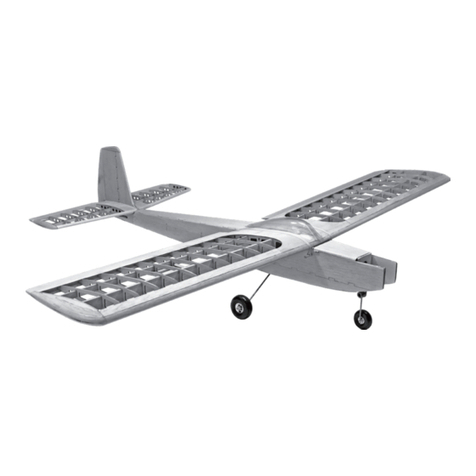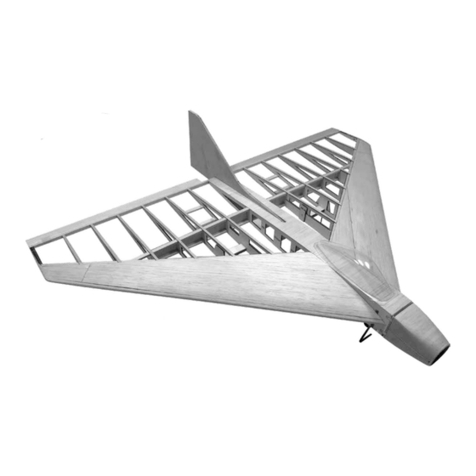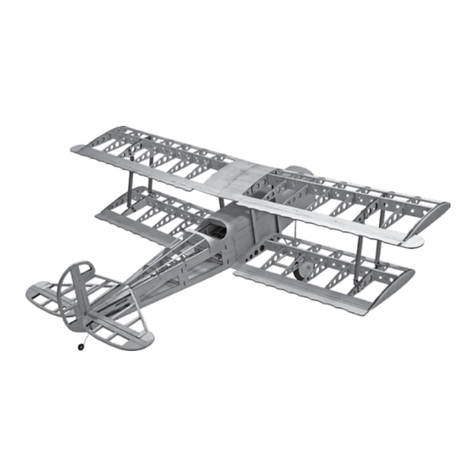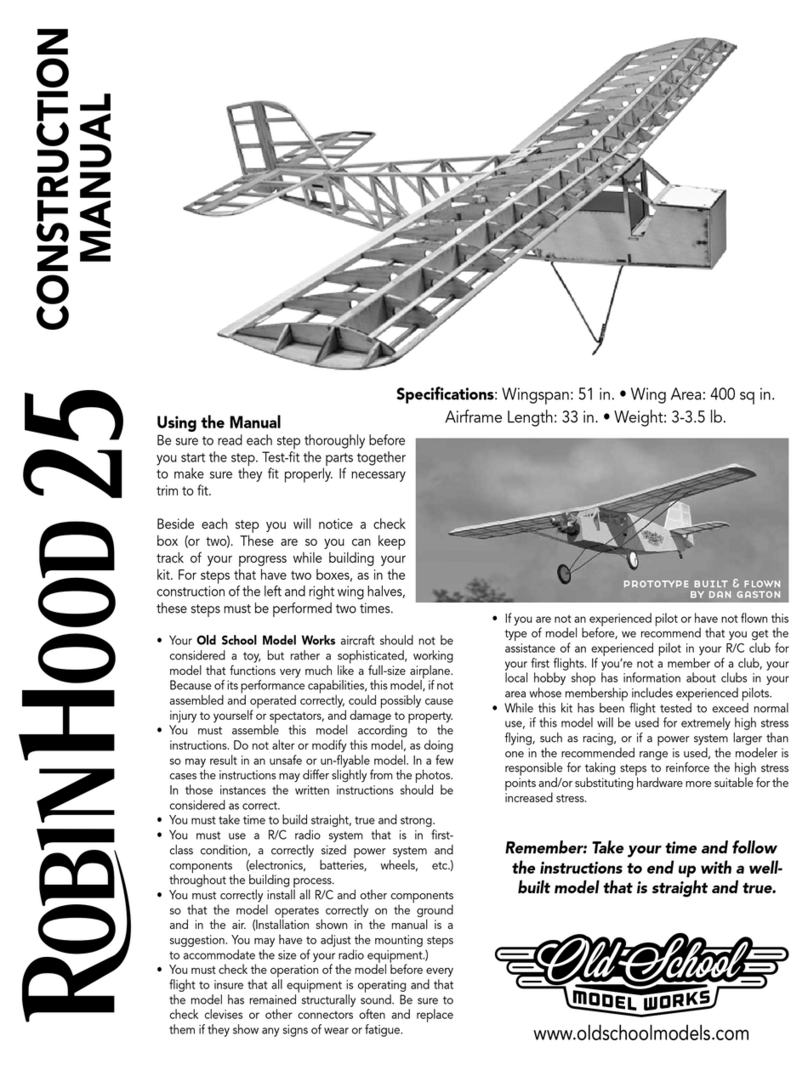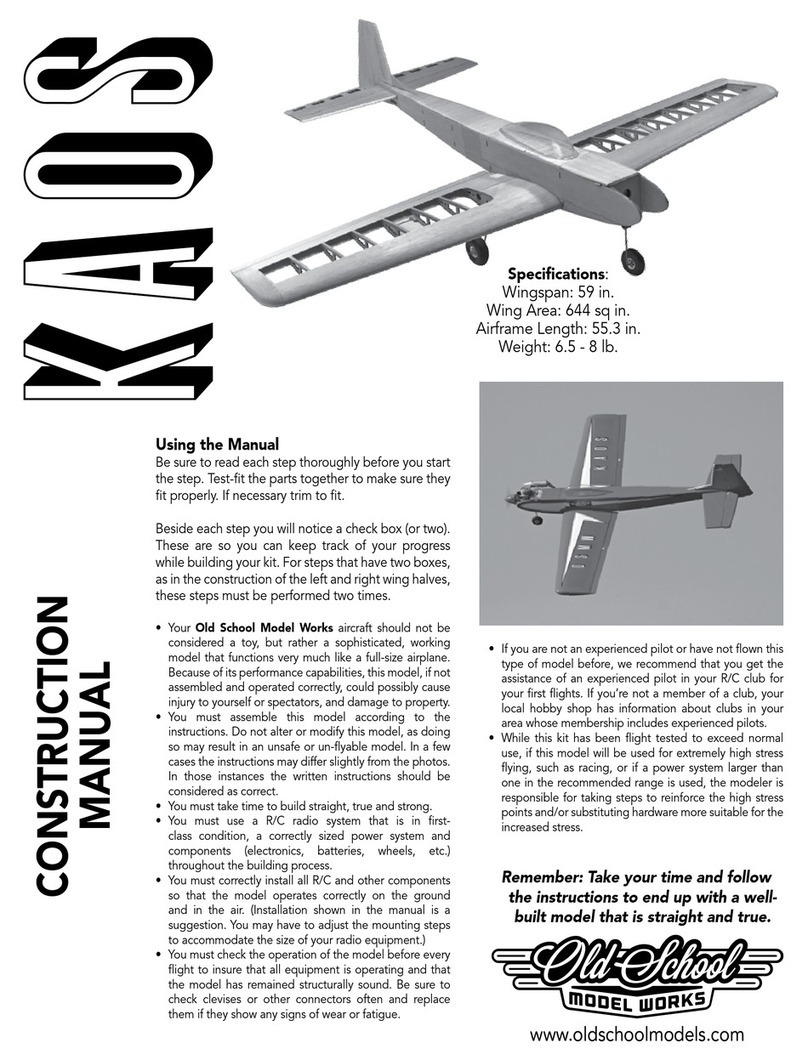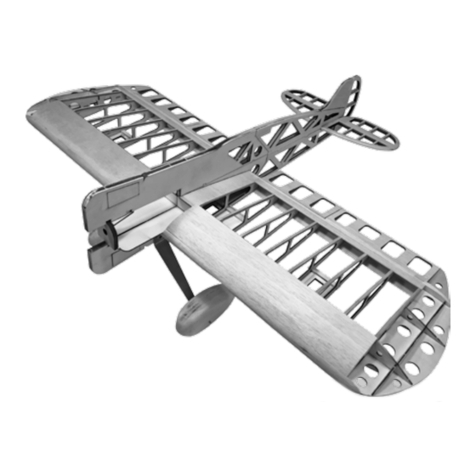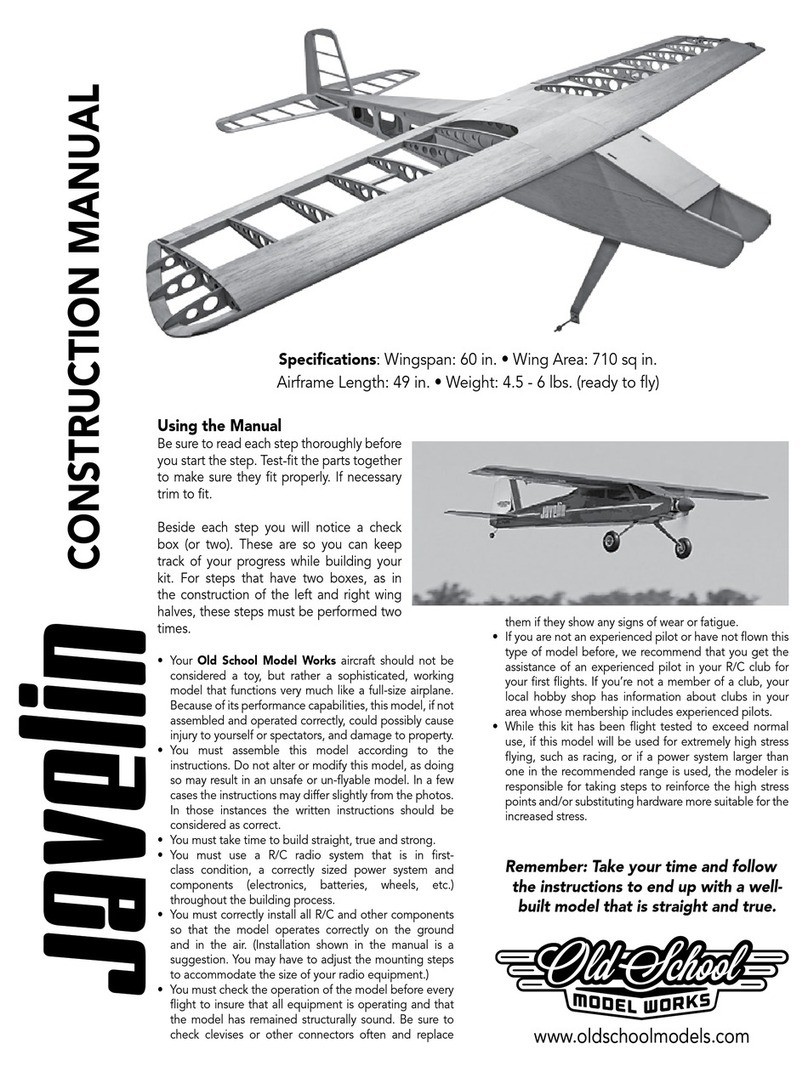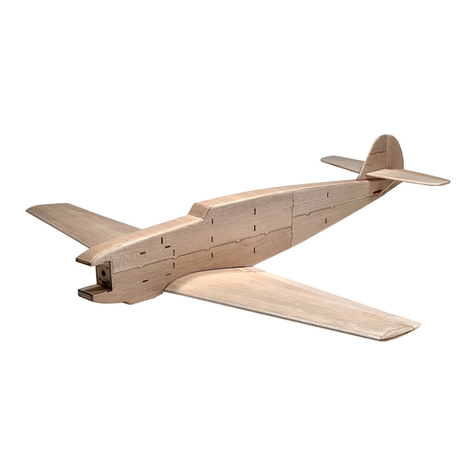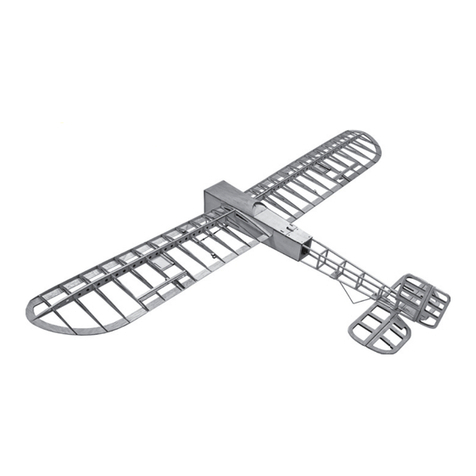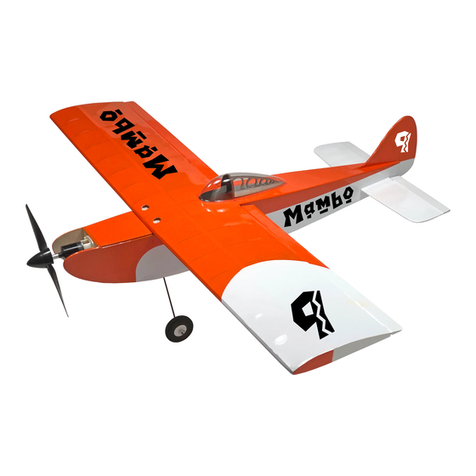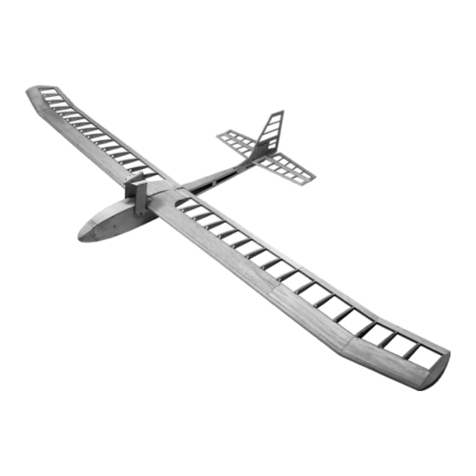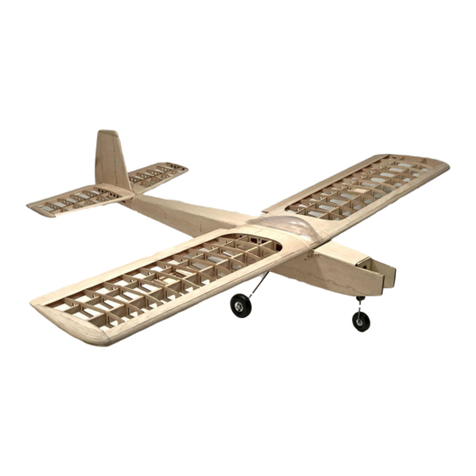
Page 6 www.oldschoolmodels.com Construction Manual
Page 6 www.oldschoolmodels.com Construction Manual
■ Step 14 - Horizontal Stab Assembly (HS8)
Locate the eight HS8s from BP1. These
are all the same and are glued in
between the internal bracing. Starting
on the port end, apply glue to where
the HS8 will contact HS4 and HS7, then
glue it in place, nice and flat. Work your
way across the stab, doing the same thing for each HS8 until you
reach the starboard tip.
■ Step 15 - Horizontal Stab Assembly (sanding)
You should now hopefully have
a stab assembly that looks
remarkably close what's shown
here.
Now, remove any pins
you have holding the stab
assembly in place, but don't lift
off the assembly. There should
be enough glue in place to hold it in position. Lightly sand the top
face to remove any excess glue so you'll have a smooth surface.
■ Step 16 - Horizontal Stab Assembly (HS10)
Locate HS10 from BP14. This
is glued to the back half of the
assembly. Apply glue to the
back half only, then carefully
attach HS10 so it's perfectly
aligned and flat along it's entire
length. Again, weights might be
a good thing to hold in place while the glue cures.
■ Step 17 - Horizontal Stab Assembly (HS9)
Locate two HS9 from BP15
and BP16. These are glued to
the front half of stab, one on
each side.
Using the same techniques
you've just used, attach one
HS9 to the port half, and one
to the starboard half. Again, flat and smooth is what we're looking
for here.
■ Step 18 - Horizontal Stab Assembly (HS9, HS10)
Carefully remove the stab assembly from the waxed paper. Flip it
over and lightly sand the stab's framing surfaces.
Locate the remaining HS10 from BP14, and the HS9s from BP15
and BP16. Glue these in place, just as you did for the other side.
■ Step 19 - Horizontal Stab Assembly (rear notch)
You'll notice that the stab's sheeting has
a notch cut into the trailing edge. Use a
hobby knife and/or a saw) to remove the
internal framing filling up this notch.
For a few reasons I won't go into here, this is
not something that can easily be engineered
here at OSMW World-Wide Headquarters.
It's just easier to remove this portion of wood after
the stab is assembled.
Once finished, set the completed stab aside.
■ Step 20 - Elevator Assembly (E1, E2)
Locate both E1s from BP2 and two E2s from BP17.
Position the E1s so they are mirror
images of each other. Then working
with one at a time, apply glue and
attach one E2 to each E1, making sure
they're perfectly aligned. This should
leave you with two mirror image
elevator halves, as shown here.
■ Step 21 - Elevator Assembly (joiner)
Locate the pre-bent elevator joiner from the
hardware bag. This is used to join the two
elevator halves together as shown here.
Use a file, or some sandpaper to rough/scuff
up it's surface, where it will fit into the
elevator halves.
Because the pre-bent joiners are hand-cut
and hand-bent, you might need to adjust
the bends slightly to guarantee they are both at 90° and the joiner
is perfectly flat. (Two pairs of pliers, one in each hand, should give
you the leverage needed to make any bends.)
■ Step 22 - Elevator Assembly (join elevator halves)
Grab that trusty straight edge
you used a few steps back.
Pin the port elevator half in
place, so that the pre-cut notch
in E1 is visible.
Now, place the other elevator
half in position, but don't pin it
down just yet. Instead, push the
joiner in the grooves of both halves.
Place your straight edge along the leading edge of the halves, as
shown here. Then pin the starboard half in place.
(The reason for this is because of the hand-cut nature of the joiner
can make it a little longer or shorter). No worries as sanding later
on will fix all of this.
Now mix up a little epoxy that you'll use to glue the joiner in place.
Remove the joiner, apply the glue, then press the joiner back in
place. Clean up any excess epoxy with some denatured alcohol.
■ Step 23 - Elevator Assembly (E2)
While the epoxy is curing, locate
the remaining E2s from BP17 and
glue them on to the top of the E1s.
Again, make sure everything is
aligned and flat along their lengths.
Once all the glue has cured, remove
the completed elevator assembly
from the board and set it aside.
This completes assembly of the tail surfaces.
See, this building stuff isn't as difficult as you though, eh?
You've built all the tail surfaces and only needed a few pins,
a file, a straight edge and some sandpaper. Not bad.
Time to move on. The wing halves are built next, so clear your
board of all everything and let's make a great looking wing.
